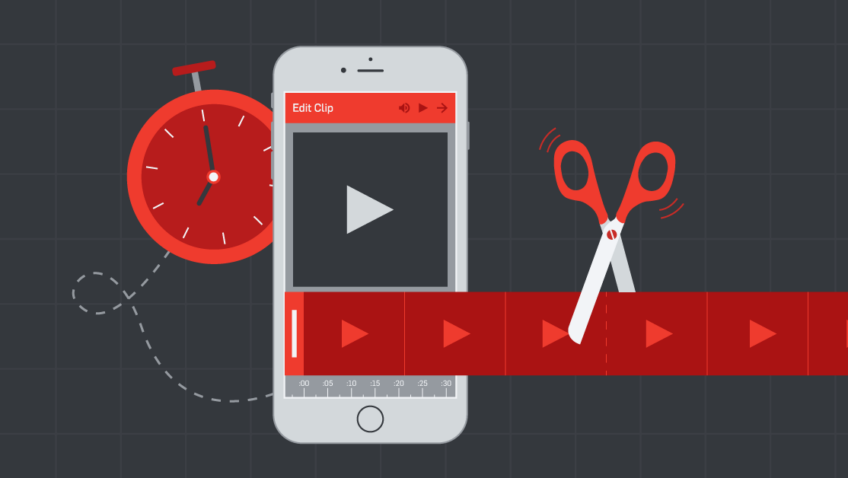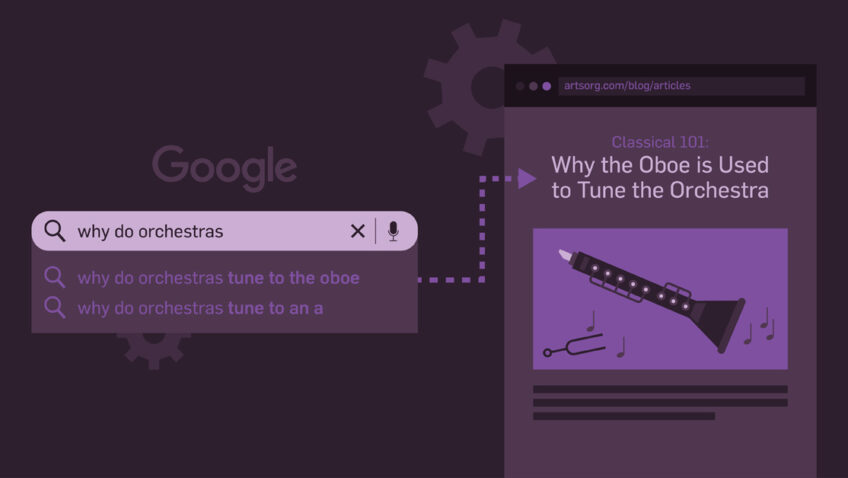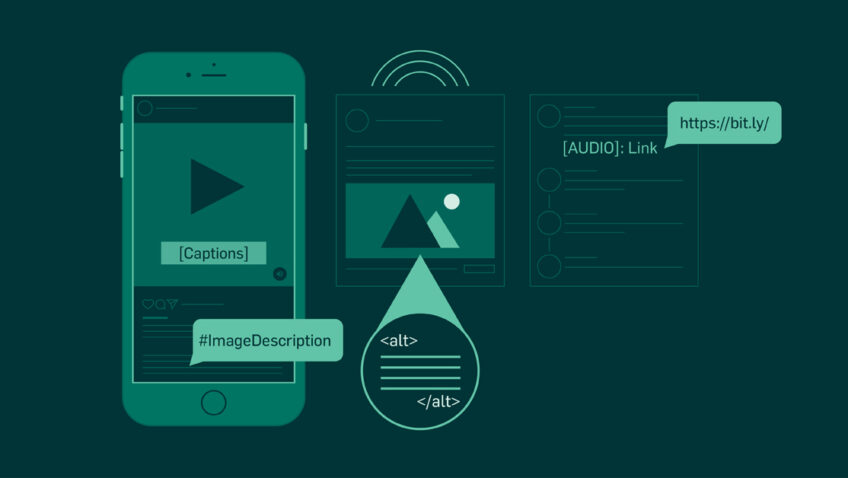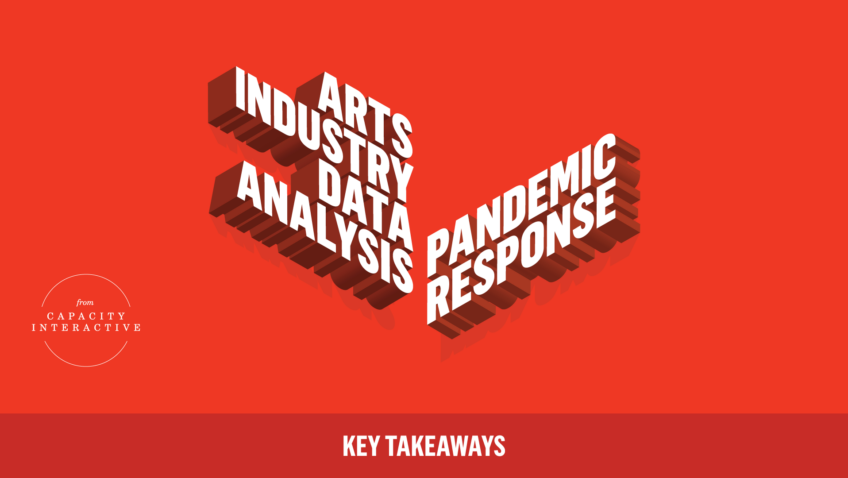Planning for High Volume On-Sales (The Donut Problem)
Let’s say you have twelve delicious donuts in a box. You bring them into a classroom of first-grade kids, frothing with glee after recess. You put the donuts on a table. Cake donuts. Glazed donuts. Different flavors. They smell good. They’re even still a bit warm.
You say, “Who wants a donut?”
What happens? All thirty kids come rushing to the table and start grabbing donuts in a fierce dustup of flying sugar, elbow jabs and colorful uses of the word booger.
The lucky kids nearest the box get one but then get crushed by the throngs pushing in. The less lucky kids on the periphery are sad they didn’t get a donut and by the time they even got a glimpse of the box, it was empty. Crumbs. Not fair! There weren’t enough! Disappointment sets in.
And truthfully? It wasn’t a great experience for anyone. Even the kids who got a donut had to scarf it down in a half-chewed Darwinist gulp before they could properly savor it.
Now imagine those donuts are a limited availability run of Kusama or Hamilton tickets and that is you in the dustup. As a patron, is that really the customer experience you want to have? A wild, bloodlusty landrace for… museum tickets? As a venue, is that the customer experience you want your patrons to have? Sure, the hype is good but wouldn’t it be better to get tickets into the hands of your patrons with as little drama and inconvenience to the customer possible?
Managing large ticketing on-sales is the very face of the tired old man, Supply And Demand (whose initials are, not coincidentally, S.A.D). But it doesn’t have to be that way. Venues have the ability to tip the balance in favor of the patron in how they design for digital customer experience.
Here are some things to keep in mind when managing a large ticket on-sale where demand outstrips supply, and how to advocate for good customer experience throughout.
Identify a Performance Goal for Your Website
How many tickets do you want to sell and what is a reasonable time for a patron to spend making that purchase? The answer varies by genre of an organization. It varies by show. It varies by organization and regional culture. But the very first thing to identify when planning for success with a major on-sale is “what is my organization’s ‘time to sell out’ goal for this sale? How long will I allow the customer to queue, if at all?”
The topic of how fast your website can sell tickets gets technical quickly. But leaving that aside for the moment, it all starts with defining your business goal and setting the course. What’s your ‘time to sell out’ goal and how serious are you in backing that goal with money and staffing? Identify that, and you will have a horizon line to keep in view as you initiate work with your technology vendor/team.
Treat Each Major On-sale like a Final Playoff Game
There is no more visible or important customer service day than a highly-publicized on-sale day. All eyes are on you and you have a beautiful opportunity to impress new patrons who may be interacting with your organization for the first time. You also have an opportunity to strengthen the love your loyal patrons already have for you. On the flip side, any preparation steps you miss will be telegraphed and amplified on social media and that reaches people who may not even be buying tickets that day. Preparation counts. Your peak sales days either contribute or detract from your brand. My team oversees hundreds of major on-sales a year and the #1 thing we see bring down an otherwise successful on-sale day is lack of preparation and lack of testing. With on-sale prep, trust nothing. Assume nothing. Verify set-up and configuration again and again until the event is on-sale successfully.
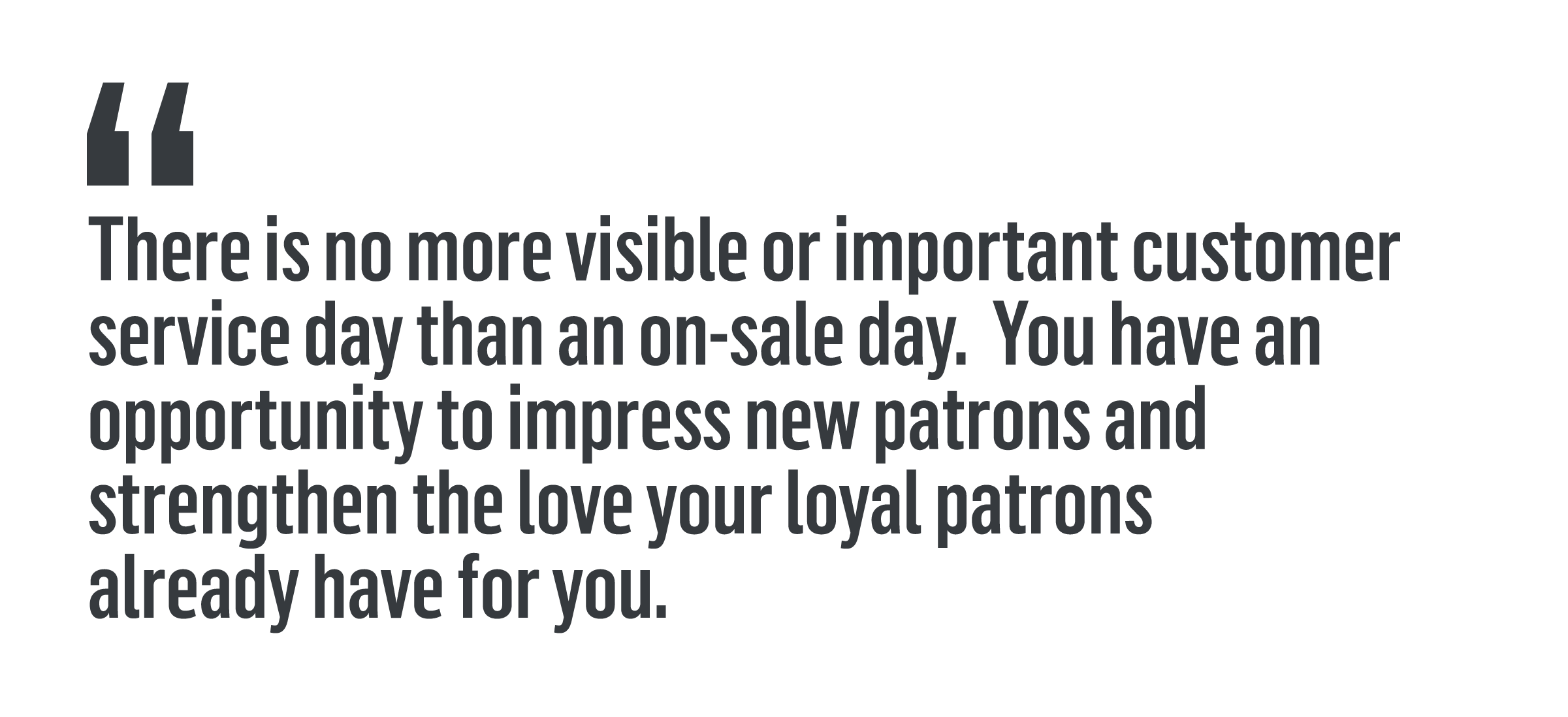
Put Someone in Charge
Put one person in charge of system configuration and set-up, one person in charge of marketing/communications and one person in charge of technology. They can deputize as many as they wish but having a single responsible party on the hook for each major discipline is crucial. Finally, rehearse and test appropriately at all levels. It’s tedious but it makes the single biggest difference between a good customer experience and a mediocre (or even horrible) one. When we have a client having a major on-sale, we rehearse and prepare with them as though it is our first on-sale ever…but bring to the table the years of experience from thousands of on-sales well managed. Despite all that experience, we leave nothing to chance or assumption. And that diligence and humility pays off.
Prepare Your Communications Strategy
One of the best ways you can improve public perception of a major on-sale is also one of the least technical. Effective communication and use of social media during the live sales event makes an enormous difference. I have seen on-sales encounter technical issues and still receive rave public reviews, simply by having proper communications strategy in place and managing social media effectively and proactively throughout. At the same time, an on-sale with flawless technical execution can receive a swell of negative social media due to poor communication and lack of context setting for the patron. My team coaches organizations in effective messaging campaigns around all contingencies they may encounter in the on-sale (expect the best, plan for the worst) and we help them prepare messaging in advance for all types of scenarios. In a hectic on-sale situation, being able to copy and paste from a library of prepared messaging can save time and keep you on-message when moments count. (Pro tip: Assign a dedicated social media manager for the duration of the on-sale and don’t make someone try to respond to social media while doing another job. It’s a full-time role during a busy on-sale.)

Assemble a Day-of Triage Phone Call or Meeting
A large on-sale will involve key knowledge and real-time input from many experts across your organization and vendor landscape. When Tessitura’s ecommerce platform is hosting a significant on-sale, we convene a “war room” conference call and staff it with a leader from each major discipline: an expert on our hosting environment, an expert on our web platform and set-up, an expert on system performance optimization. We then loop in the client organization team (see point #2, “put people in charge”) and any other collaborating vendors who have a technical stake in the on-sale. The end result is one single conversation, happening with human voices, in real-time and with every type of expertise represented in order to make well-informed, quick-fire decisions. Having this single conversation guiding the on-sale prevents ‘right hand/ left hand’ confusion, prevents lost time when needing to get input from someone not there and also helps keep public communications about website performance and ticket availability timely and accurate.
Think back to those first-graders and the lack of supply for demand. Imagine that instead of the panicked lunge for the donut box, you had clearly explained upfront that twelve people in the room would get a donut. That the line would form at a certain time, and getting there early or trying to edge in would not give you an advantage. You may still have some disappointed kiddos when the box is empty, but everyone would leave feeling they had a fair shot and would be game to try again the next time the donut box appeared.
Let’s face it…adults are not that different from kids where donuts are concerned.
However many donuts/tickets you have for a specific on-sale, it can be a positive and brand-strengthening day for your organization — with proper planning and communication.
Kristin Darrow is the Senior Vice President, Digital at Tessitura, a CRM platform that provides a complete snapshot of visitor relationships while housing data in one, unified system. Tessitura is a proud sponsor of Digital Marketing Boot Camp for the Arts 2018.


